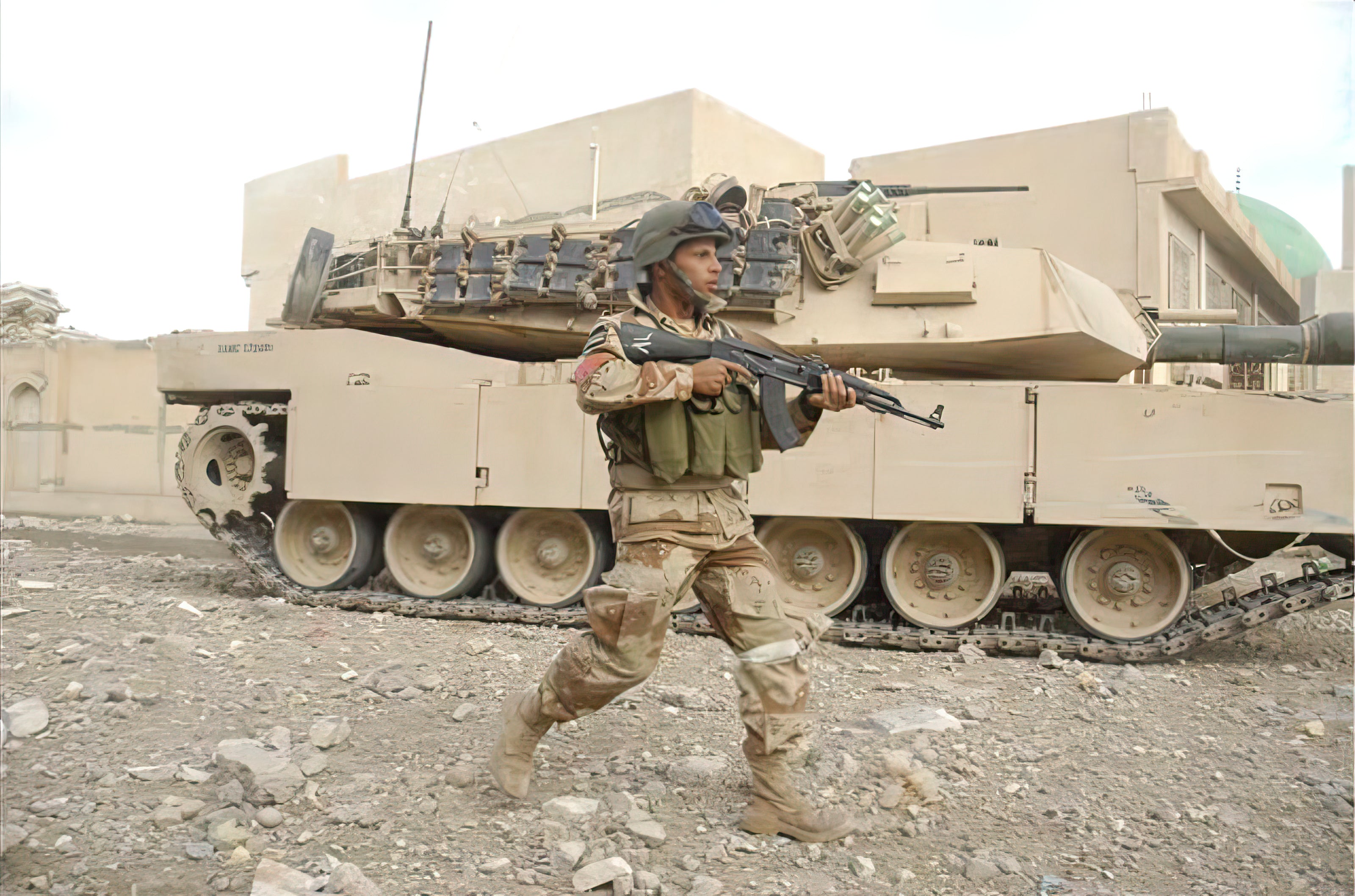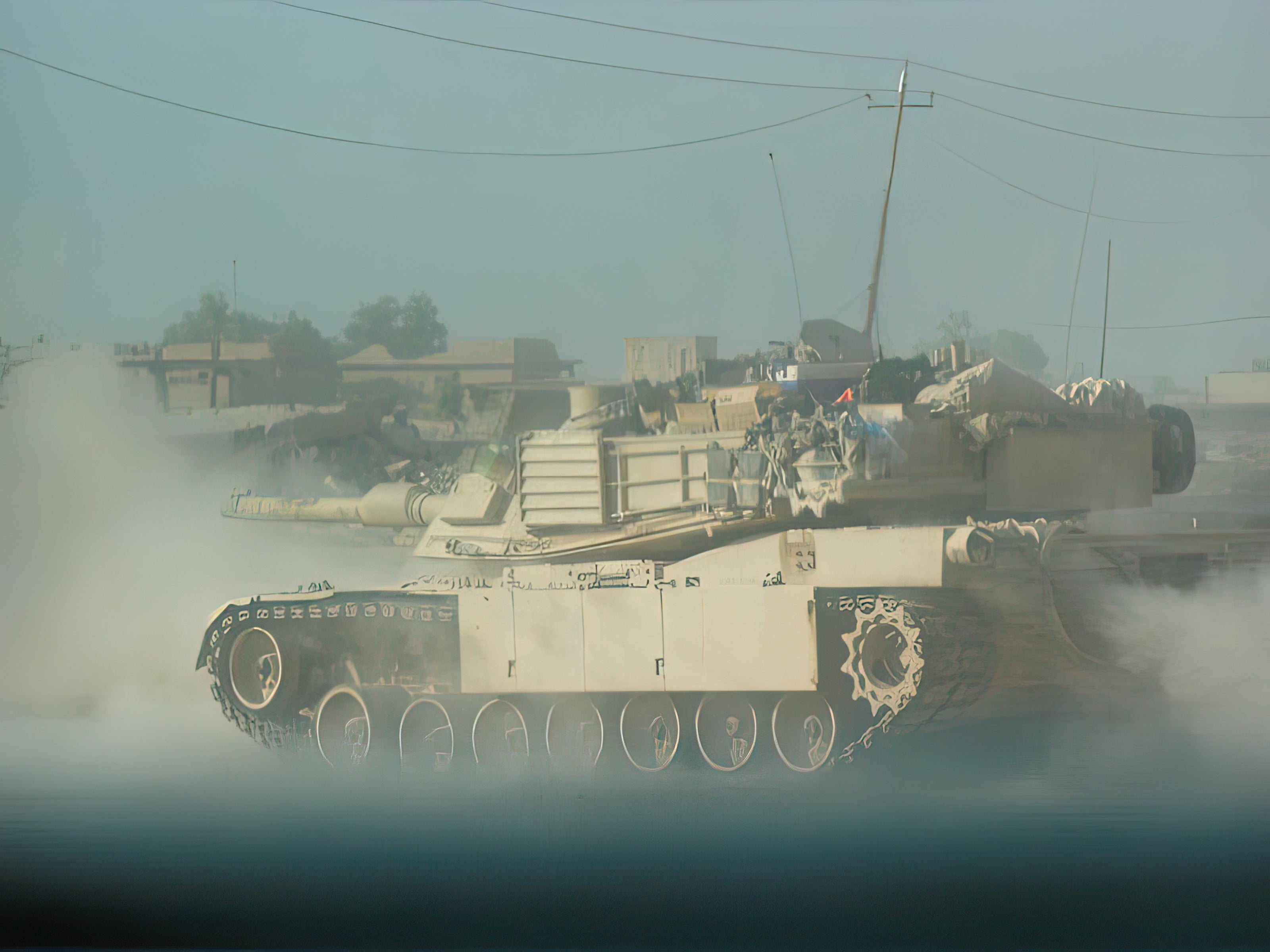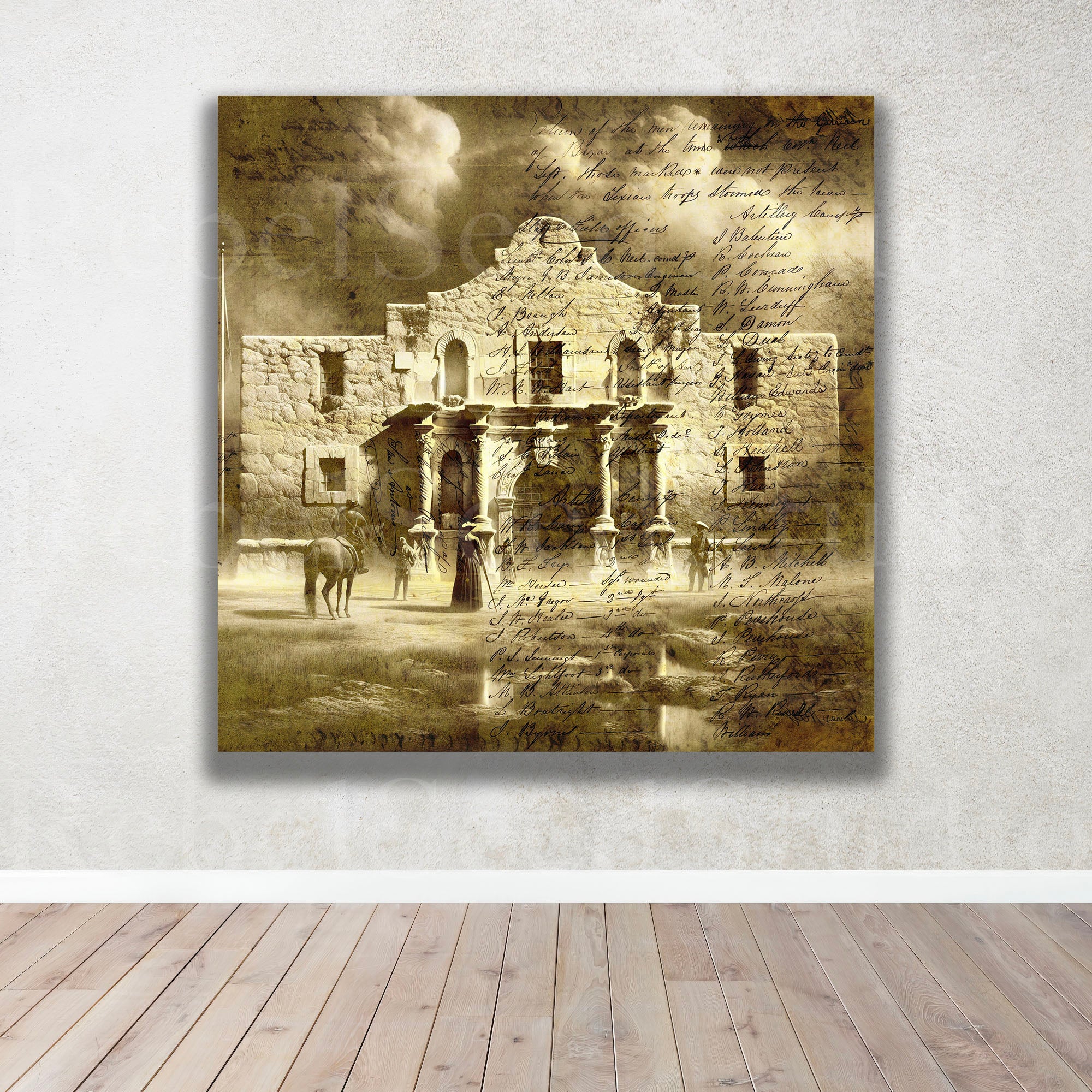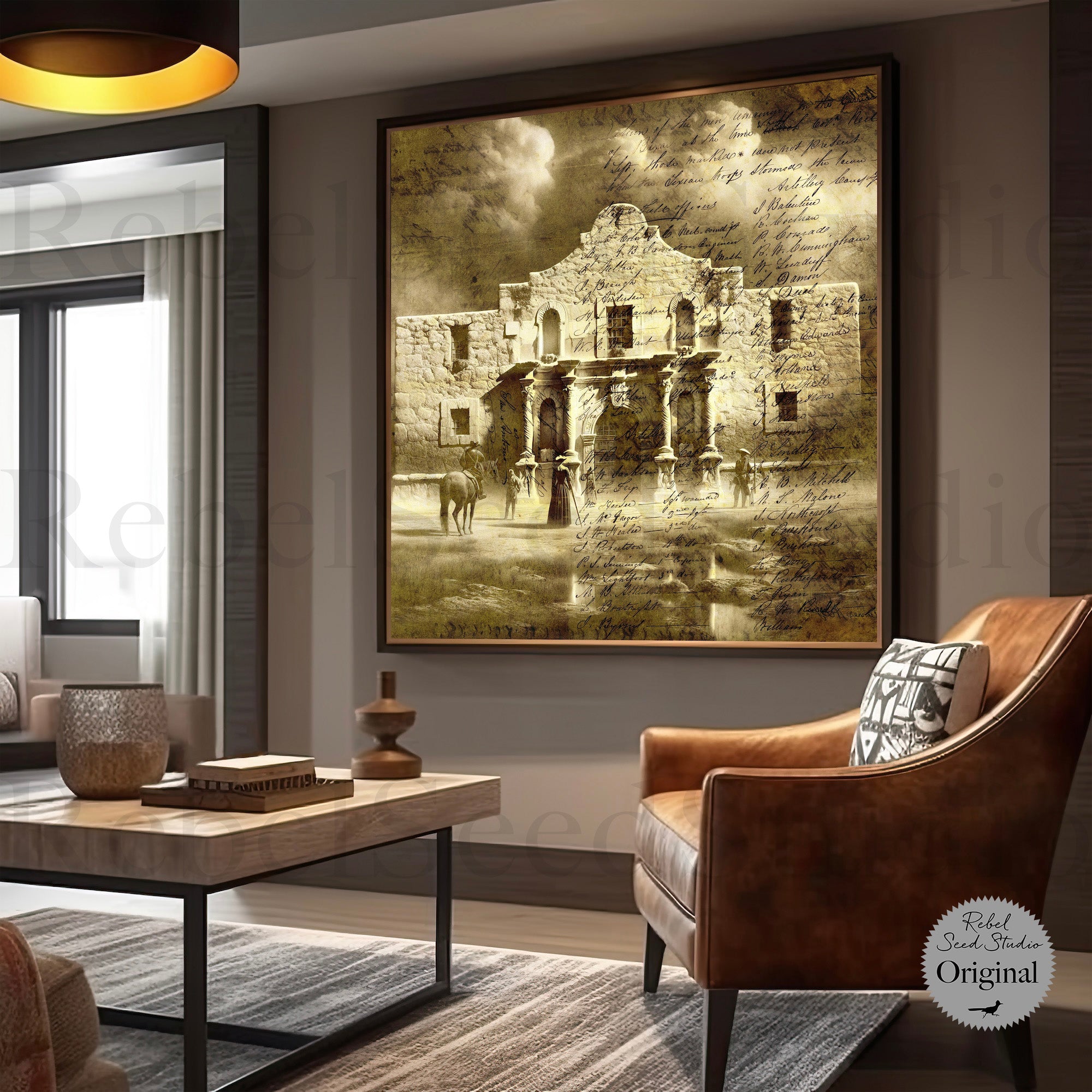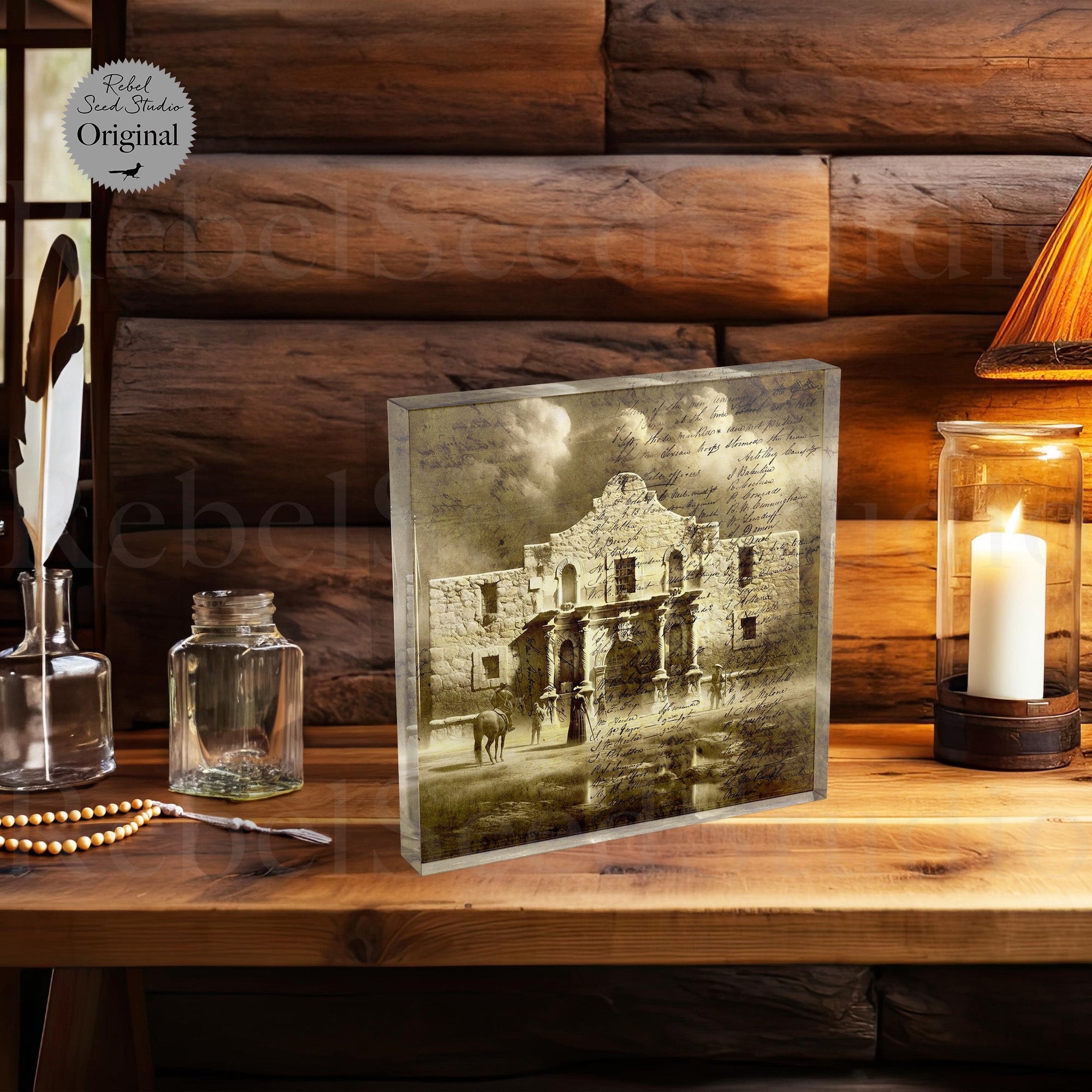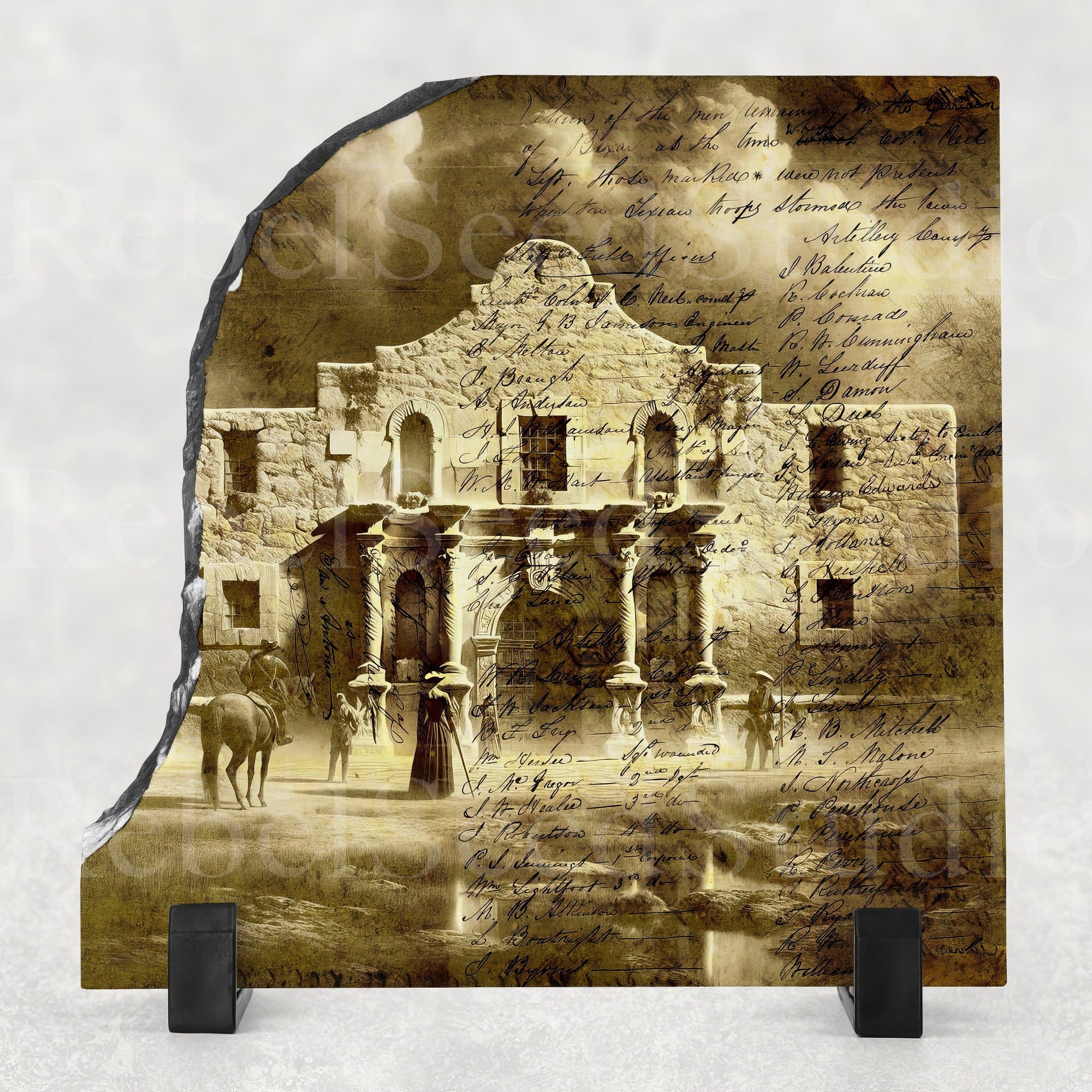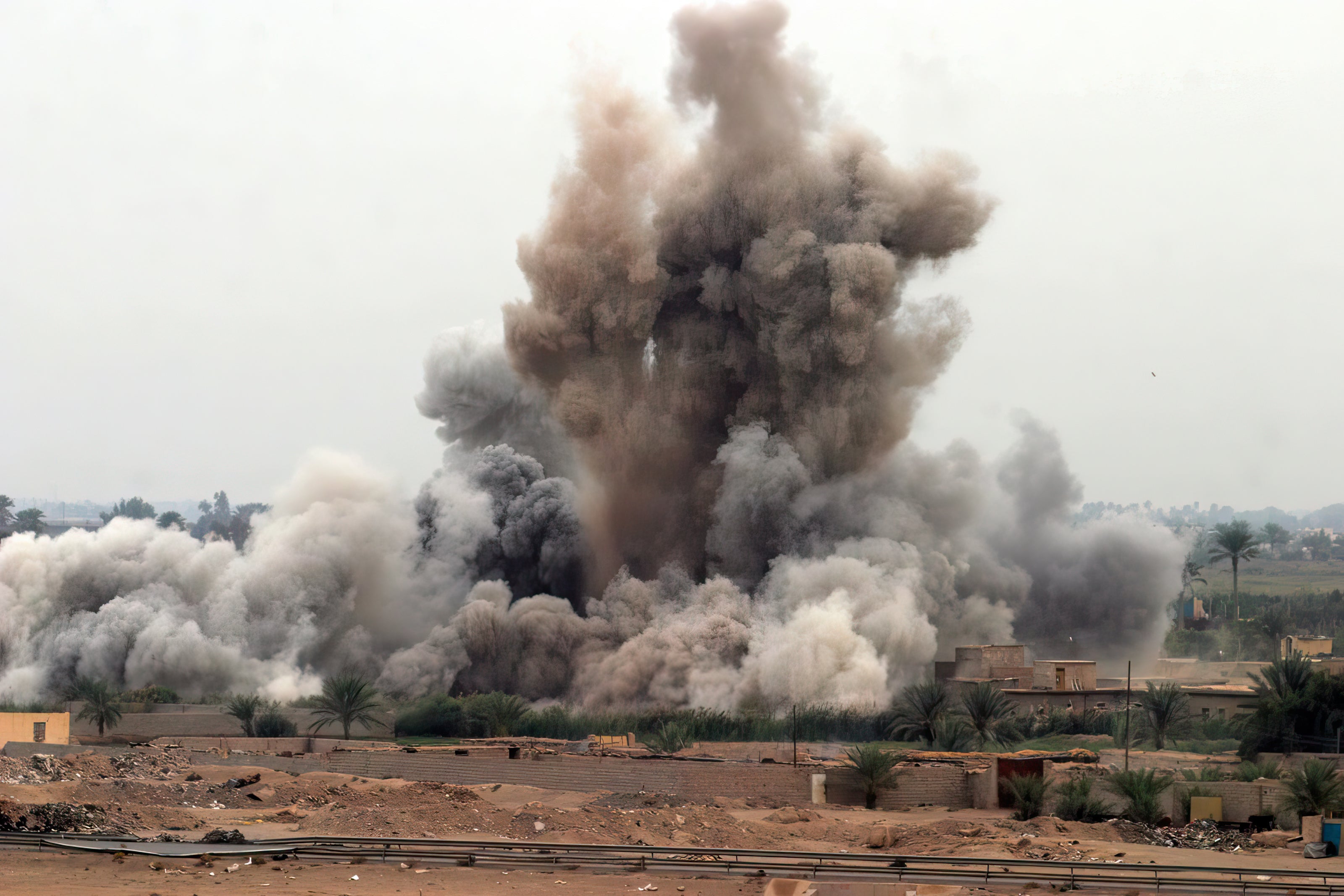
Battlefield Fallujah - Episode 5: Into the City, RCT-1 (November 7-9, 2004)
Regimental Combat Team 1 moves into the city as 3rd Battalion, 1st Marines, 2nd Battalion, 7th Cavalry, and 3rd Battalion, 5th Marines kick off the assault and begin searching house-to-house.
For Operation Phantom Fury, the term D-Day November 7, designated preliminary operations and the positioning of forces for the attack. First into position was Regimental Combat Team 1 (RCT-1) led by Colonel Mike Shupp. It comprised 3rd Battalion, 5th Marines; 2nd Battalion, 7th Cavalry; 3rd Battalion, 1st Marines; and the Iraqi Security Forces.
Major General Richard Natonski: "D-Day was actually the enhanced shaping day. The assault into the city actually took place on D+1. On D-Day we conducted our enhanced shaping, which included the movement up the peninsula to take the hospital and block the two bridges. We wanted to block the two bridges leaving Fallujah on the western side across the Euphrates to prevent the enemy from escaping. On that day we also moved 2BCT into their blocking positions on the south and east side of the city to prevent enemy from escaping in that area, and at the same time we moved our assault units onto the north side of the city so they were in position to attack the following day on the 8th of November."
Natonski told Shupp he wanted a penetration into the Jolan District, which the division felt was one of the enemy’s major command and control nodes.
Colonel Mike Shupp had argued for a multiple-axis attack, north to south, with three battalions: "So, we were coming up with multiple courses of action and the courses of action that we were developing was to have more axes of advance then just a single point. It would be 3/5 and it would be 2nd of the 7th Cavalry coming in with their armor and behind them would be 3/1, with 3/1 delivering the death blow to the enemy. Initially, establishing the support by fire that would allow penetration, and then the death blow, to the enemy, that would strike into the heart of the Jolan."
Major General Natonski spent the day visiting each of the units: "I just told them how proud I was and that here was an opportunity now to take the fight to the enemy. I drew a parallel to Patton. I said, you know, 'Someday that grandchild is going to be sitting on your knee and they're going to look at you in the eye and say, 'Grandpa, what did you do in the war?’ You can say, 'Well, we weren’t shoveling it in Camp LeJeune or Camp Pendleton or in Hawaii, you were fighting in Fallujah'. I will tell you that the troops looked forward - I mean, let’s face it, that’s why we come into the Marines, for that. They were ready for the fight. I spent the whole day of the 7th traveling from unit to unit just to see them. I told a number of reporters that day that at that moment, the most potent fighting force on the face of the earth was assembled around Fallujah. And that once they started the assault there was nothing on the face of the earth that would stop those Marines and soldiers."
At dusk on the evening of November 7, light armored vehicles (LAVs) of Task Force 3rd Light Armored Reconnaissance Battalion (3rd LAR [Wolfpack]) kicked off the attack by establishing blocking positions on the eastern side of the peninsula, along the Euphrates River overlooking the city. Team Mech, which included Alpha Company, 1st Battalion, 503rd Infantry; an army tank platoon; and a Bradley company, took up positions on the western side of the two bridges to block them off from all traffic into and out of the city. The northern bridge was referred to as Blackwater Bridge, Brooklyn Bridge or Old Bridge, and the southern bridge was referred to as George Washington or New Bridge.
Bravo Company, 1st Battalion, 23rd Marines, took positions along the western side of the peninsula, completing sealing it off. Immediately following the heavy combat units, two companies of the Iraqi 36th Commando Battalion and their special forces advisors in seven-ton trucks roared up to the Fallujah General Hospital on the northern neck of land at a bend in the river. The commandos quickly dismounted and stormed into the facility.
Lieutenant General John Sattler: "The first attack up the peninsula was executed flawlessly, to include the take down of the hospital. We had, I think, one wounded, but the tragic part was we had a bulldozer that was building berms up by the bridge, and we’d had some rain, the shoulder was soft, and the bulldozer slid down into the Euphrates River, and the individual guy in it, plus the individual driver, we lost two non-combat deaths that first day."
The Marine fatalities were Corporal Joshua Palmer and Lance Corporal Jeffrey Lam.
The hospital search took less than an hour and resulted in the apprehension of five men suspected of being foreign fighters, and turned up several Kalashnikov rifles, grenades, anti-American propaganda, and two cell phones that were found on the roof.
Shortly after first light, the 4th Civil Affairs Group delivered emergency prepackaged medical supplies and humanitarian assistance kits to the hospital. Once the peninsula was sealed, Task Force 3rd LAR turned its attention to the river. Six small-unit riverine craft (SURC) were launched on a waterborne patrol to prevent the insurgents’ freedom of movement. According to Color Sergeant M. R. Tomlinson of the Royal Marines, “Within 20-minutes the enemy engaged the front two boats from a range of 50-meters."
Colonel Shupp directed them to stay on the northwest outskirts of the city, just west of the sea grass islands.
With the western ends of the two bridges in friendly hands, engineers built high berms and tetrahedrons on the roadway to restrict vehicle traffic and laid rolls of concertina wire to keep foot traffic from crossing. They also swept the bridges for IEDs and explosives.
Colonel Shupp sent two EOD teams and a Marine canine unit across the bridge. The bomb sniffing dogs uncovered explosives and 12 to 16 IEDs that were buried in the pavement and in light poles with wires going into the palm groves on the south side of the city.
Tactical PSYOP Detachment 940 immediately set up loudspeakers directing residents to move south to escape the oncoming attack. This was all part of the information operations plan to encourage the city’s residents to leave their homes.
When the sun rose on D+1, Task Force 3rd LAR’s after-action report noted that “a large volume of direct fire contact erupted where Team Mech was located. There were several insurgent strong points across the river that were being engaged.”
Embedded reporter Shawn Baldwin reported, “Well over 200 Marine and Army soldiers had staked out positions all along the river front and were bombarding insurgent positions across the Euphrates with tanks, Bradley’s, HMMWVs loaded with .50 cals, mini guns and artillery.”
According to Shupp, their long-range guns, the LAVs, and the Bradleys “were just ripping them apart.”
Artillery used Paladin Howitzers, capable of firing high-explosives, illumination and smoke rounds for counter-fire and direct support.
U.S. Army Captain Michael Burgoyne, Battery A Commander, 3rd Battalion, 82nd Field Artillery, 2nd Brigade Combat Team, 1st Cavalry: "The guys are excited to be here. They're doing a job they enlisted to do, which is provide direct support for troops in contact. [artillery fire] Shot! [chuckles] Over [chuckles]. That shot in particular is in support of troops as opposed to firing a mortar or rocket position that's been shooting up, indiscriminately, across the line, Sir."
While Task Force 3rd LAR consolidated its positions on the peninsula, the division commenced one of the most difficult phases of the operation— the movement of six combat battalions with thousands of men and vehicles to the northern outskirts of the city in preparation for the assault.
RCT-1 and RCT-7 moved from the assembly areas to covered attack positions north of the railroad station and rail lines on the northern outskirts of the city.
Lieutenant Colonel Nicholas Vuckovitch, operations officer for RCT-7: "What we did is, essentially, organized the battalions into task forces and moved them from Camps Baharia and Camp Fallujah. Had them occupy what we call dispersion areas to simply array themselves for movement, several hours before their start point time. We then, at prescribed times, released the battalions and serials on convoys, if you will, to occupy the SOF positions. That actually worked out well. [It took] exactly seven and a half hours, as we had planned."
Gunnery Sergeant Duanne Walters was an engineer attached to 3/1: "We went down to the train station in our insanely long convoy. There were six HMMVWs, a 7-ton, two D-9s, two aces. And, the D-9s only go ten miles an hour [interviewer: "nice"]. We're doing it at night, which presented a big problem for the D-9 drivers because it's hard enough to see out of there already [interviewer: "right"]. And, when you put on NVGs they don’t have any IR lights. So, we, basically, put IR chem lights on all the antennas of our vehicles [interviewer "yeah"]. And they just kind of followed the IR chem lights and hoped they were going the right way."
Lance Corporal Justin Boswood was with 3rd Battalion, 1st Marines, Kilo Company: "We loaded up and we stepped out, went to our attack position outside the city, just north of the train station. We sat in a defense for about a day and a half. That night, they just rocked the city with everything imaginable. They had air stacked to the moon, and they damn sure used every bit of it, ‘cause that city was just going up everywhere, all night long... 81 mm mortars, fire from our pos, 60s, just everything was going. We had artillery firing from Camp Fallujah. Gun runs. Had Apaches in there, had Cobras in there. It was intense, and to just be able to sit back in a hastily dug foxhole, smoking cigarettes and watching it, it was awesome. It beats any fireworks show I’ve ever seen in my life. It was pretty intense, so everybody got pumped up."
The assault units presented a great target. First Lieutenant Chris Boggiano, Brigade Reconnaissance Troop (BRT), 1st Infantry Division, stated “We started calling for fire at 1000 in the morning and were out there for a good 10 or 12-hours calling artillery on targets of opportunity all along the northern edge of the city.”
Colonel Shupp noted, "We’re putting deadly fire into their positions with precision air [while] at the same time the AC-130s are working over the attack routes. Any vehicle in the street, any planter, any garbage pile, anything that the Iraqis don’t normally have outside their home is being destroyed.”
The term D+1 designated the date of the main attack, November 8, and H-hour was the time for the attack forces to cross the line of departure (LD or LoD). With the assault units in position and the enemy pinned down by artillery and air support, Lt. Col. Patrick Malay’s 3rd Battalion, 5th Marines, commenced its attack at 1052 to seize and clear the regiment’s first objective.
RCT-1 Objective A: The Apartment Complex
Objective A, an eight-building apartment complex on the northwest corner of the city, was just above the overpass. Colonel Shupp wanted the complex for his command post because it overlooked the city and provided excellent observation from its upper stories. In addition, its location astride the enemy’s withdrawal routes helped to prevent the insurgents from slipping out of the city, helping to secure the regiment’s lines of communications. Because the complex had been used before in the April battle, there was some concern that the insurgents might have planted explosives in it to “destroy the building in mass.” This threat caused the regiment to launch its attack during daylight in better visibility than would have been available under a nighttime assault.
3rd Battalion, 5th Marines crossed the line of departure at 1100 and quickly reached the complex without encountering enemy fire.
Major Marshall Bourgeois: “After we took the apartments, there was a lot of confusion. There were approximately 200 civilians in the apartment complex, a lot less than what we had anticipated. They were anticipating between 1,500 and 2,000, said it was gonna be a huge problem with moving these civilians from the apartment complex to the designated location - which, that was Task Force Striker, the battalion XO, that was his job to get these civilians out of the area. There was firing going on, small arms fire, as well as the Marines were breaching the rooms and the steel doors with demo and so, at first, I didn’t know if we were getting shot at or what, but apparently we weren’t, Marines were just using the demo to get—to gain access to these rooms so that they could clear the rooms.”
The residents were rounded up, screened for gunpowder residue to determine if they had recently used a weapon, and given $300 compensation for the inconvenience.
Major Todd Desgrossielliers, the battalion executive officer: "We would pay them some solatia, if that was required, and then get them evacuated quickly as possible, north to the city of Saqlawiyah. They just wanted to get out of there. So, we facilitated that process. They’re civilians. You treat them with dignity and respect. We had translators there. We had our attach to PSYOP team there, broadcasting that, 'Hey, we’re not gonna kill you'. I know the insurgents put a pretty good IO plan forward to tell them that we’re gonna murder everybody. We allowed them to go back into the apartment buildings and get some things if they asked. We took ‘em to the Al Anbar Technical Institute, which we set up head of time. We had water, food, everything pre-staged there. There were tents set up. We took them to a place that would be able to help them temporarily. And then, at some point, these people linked up with family in other areas of the country."
After clearing the complex, Colonel Shupp sent an EOD team through the buildings to make sure they weren’t wired with explosives. Then he went in and set up the regimental CP along with 3/5’s forward combat operations center. The battalion also established a battalion aid station (BAS) in the complex.
Major Desgrossielliers: "We had a shock trauma deck that was with us, and we determined that we wanted to put them into a school building that was in the center of the apartments, and it was just directly north of HLZ. There was a soccer field there that we used as an HLZ. So, we rolled all this out and staged it right behind the assault element companies."
Shupp also established a detainee collection point. Once the complex was secured, 3/5 turned to the next phase of their mission: breaching the railroad tracks, which were built on a berm approximately 30-feet high. “The elevated track,” according to Major Cristeon Griffin, “would effectively prevent any type of vehicle from driving further south into the city, so they had to be breached.”
Colonel Shupp: "We knew in front of the train tracks, on the ground, the open ground, the dirt areas in front, that there would probably be mines in that area. So, we had to breach the train track. And we did a recon of this. When we went up there, we started getting hit with everything, small arms fires. The first time I acted as a loader and loaded the main gun and we fired a tank round there. TC Lieutenant, 2nd Lieutenant Cash, was yelling at me the whole time to close my hatch because I can’t be peeking out of the vehicle, and you could hear the rounds hitting off the outside of the tanks. Mortar rounds were firing all around us. Lieutenant Colonel Buhl, he took a couple RPGs in his vehicle. And we were able to check the breech point and we were able to also look at staging areas. That would play crucial for us, because that gave us the idea about the 2,000-pounders and the two crossing points west of the city."
At 1420, four F/A-18D Hornets from a Marine fighter attack squadron, VMFA (All Weather)-242, dropped eight GBU-31 2,000-pound joint direct attack munitions on the berms and tracks.
Major Desgrossielliers was in the process of removing residents from their homes: "The 2,000-pound bombs hit as we were evacuating people from the apartment buildings. It was pretty intense, and it helped us actually to maintain some control over all the people that we had there."
Engineers quickly went in with bulldozers and smoothed out the craters for the next stage of 3/5’s mission. At 1800, under cover of riflemen, a team of Navy Seabees and 4th Civil Affairs Group Marines entered the power substation just west of the apartment complex and pulled the plug on the city’s electricity.
RCT-1 Objective B: The Train Station
Lieutenant Colonel Willard Buhl’s 3rd Battalion, 1st Marines was next up on the step. Colonel Shupp ordered Buhl’s battalion into the attack. Their mission was to take-down the train station.
Insurgents would be able to spot the troops and the Train Station from vantage points within and atop buildings in the surrounding area, so the structures were cleared and dozed by D9 bulldozers.
Gunnery Sergeant Duanne Walters was officer in charge of heavy equipment: "They were all cleared, except for one house, it was right out on the edge. The man actually came out of the house with a white flag. And, we were all like, 'Whoa!', you know, that was the first guy we’d seen, and he was there with his wife and his mother. We got them out of the house and then destroyed the house 'cause it was about a three-story house and itad a great view of both the train station and the apartment complex. We knocked down all kinds of houses. Basically, we'd stand in the front, and if you could see the train station from the front on the ground, then we knew you could see from the roof, so we’d just knock it down."
At 1900 the attack kicked off with the assault on the train station by India Company’s 3rd Platoon, supported by Lima Company, attached tanks and the Iraqis. An hour and a half after commencing the attack, the train station was secure, although insurgents on the edge of the city kept up a haphazard fire until they were taken under fire by U.S. forces.
Lieutenant Colonel Willard Buhl: "India did a wonderful job, supported by Lima Company and tanks that were attached to us, to take that train station."
With the successful attack on the train station, 3/1’s fire support team (FIST) commenced firing on insurgent positions.
Colonel Shupp: "Train station went down with no problem. 3/1 took it, and that was a good support by fire position. We cannot fire on the enemy until we were fired upon. There were no shaping fires, which to me, was absolutely ridiculous, ‘cause we knew of the enemy positions and we cannot fire on them until we were fired upon. So, when they took the train station, of course our friends, the enemy, opened up with all the weapons and we were able to address those weapons. So, that support by fire position became critical, ‘cause now 2/7, as they came down from the north, and they went around the western side of the train station, they had to make an eastern movement against the face of the city, for like 500-meters before they can make their southern approach down the avenue known as Henry."
RCT-1 Objective C: The Ma’ahidy Mosque and Cemetery
At 1926, Lt. Colonel Patrick Malay’s 3rd Battalion, 5th Marines were tasked with taking regimental objective C, the cemetery.
Colonel Shupp watched the attack from the top of the Apartment Complex: "They were just blowing through that push. And it completely unhinged the enemy, because they were coming behind their defenses, behind the cemetery on the north side of the city, where they had all sorts of firing holes and positions."
Major Marshall Bourgeois was with Kilo Company. “Prior to the breach, you know, everyone was nervous. We didn’t know what to expect. We had wings, we had SEALS, we had AMTRACs, we had tanks. We were the first unit across the breach site. Kilo Company was the first unit into the city, with India and Lima attacking different portions of the city later on that evening, once we got our foothold in there. There was some very light, sporadic, small arms fire the first day, where we went house to house, room to room, clearing these buildings. The only noises, per say, were the Marines attempting to breach the steel doors, trying to gain access to the house.”
The battalion continued to press forward, clearing houses as it proceeded.
Major Desgrossielliers: "We had India on our far left, Kilo in the center, and Lima to our right. And, we advanced three companies on line, no reserve. There was no need for one. We weren’t gonna get counterattacked by the insurgents. They just didn’t have that capability. Our thought was, again, destroy them in place, and push through in a detailed way, clear every single building of people."
Major Bourgeois was impressed with the organization of the movement: “It was extremely organized, and I was very surprised, ‘cause it was very confusing to me, ‘cause if you look at the map, its just—it all looks the same. You know, there’s no street signs, there’s no street lights, there’s no—with the exception of some major terrain features—not terrain, but like building features, like a mosque, or an electrical plant or something like that. I mean, they had different phase lines going south in east and west boundaries, and the way that the company commander controls his unit, was to assign each platoon a particular phase line between street A and street C, and assign them as lanes. So, they—each person, each platoon had a lane, and once they reached a particular phase line, they would call a company and say they we’re at phase line—let’s say, Red, and then, you know, if the other two platoons were lagging, they were told to stand firm once the other platoons would reach Phase Line Red, so everybody’s on line, depending on the time of day or night, and would stop, remain firm, or continue on to the next phase line.
Every building, every room, every closet was to be searched. We did not want to have anybody else coming in from behind us. The battalion commander told us, he said, ‘Gentleman slow is smooth, and smooth is fast.’ So, the slower you move in the long term will be—allow us to move even faster, because we’ll know that we don’t have anything behind us. And, one—the only thing that slowed us was all the caches we found, all the weapons, and ammunition, and having EOD come and blow these things, which we were under prepared for the amount of demolitions and buildings we had to blow up."
The initial regimental objectives, the apartment complex and railroad station, had been taken, and 3/5 was in the attack.
Colonel Shupp was pleased with the way the operation was proceeding: "So, 3/5 goes into the attack. They have a good mix. They’re coming in with all of their vehicles down the western approach of the city, coming in from west to east, and their progress is just incredible."
Lieutenant General Sattler: "Once we started to come, we were unrelenting. We worked during the night, where we owned the night, with our NVGs, and the night systems on the Bradleys and the tanks, and the night systems on the TOWs and our night observation devices. I didn’t wanna let the enemy, nor did Natonski, want to let the enemy get reset, ‘cause they were on their heels, or in some cases, on their ass."
The Breach
The next phase of the operation called for 3/1 to breach the railroad tracks to open holes for 2-7 Cavalry and to provide them with support by fire as the soldiers passed through the breach. Time was a critical factor, as 2-7’s attack was to coincide with the 7th Marines’ advance. An engineer platoon on loan from 1st Battalion, 4th Marines, was tasked to create three breaches.
Colonel Shupp: "We get to this place and they’re working on one clearing point, and the D-9 dozer operator is just aimlessly dozing. If we were to let him, he would’ve kept dozing that area and gone all the way into China."
Shupp ordered the bulldozers out of the way and signaled for the mine-clearing line charge (MICLIC) to be brought up. Despite Shupp’s “encouragement,” the combined force of engineers was unable to open the three lanes that were called for in the plan. Only one lane was clear, despite their best efforts, because their vehicles kept getting stuck in the railroad tracks. They used blocks of TNT to blow the tracks out of the way.
According to Colonel Shupp, the delay was not that bad because his tactical air control parties were putting precision fire on the insurgents. At the same time, the fast movers (attack aircraft) were hitting targets, AC-130s were working over the attack routes, cutting a path through the city.
2nd Battalion, 7th Cavalry
Lieutenant Colonel James Rainey’s plan was for 2nd Battalion, 7th Calvary to go through the breach with Charlie 3-8 [Cavalry] (Cougar), come down, turn to the east, orient on Phase Line Henry, and attack along that axis. Alpha 2-7 (Apache) would follow them through the breach. Then, as the main effort, Alpha 2-7 would conduct a frontal assault on three avenues of attack directly into Jolan Park.
Rainey said his orders were to “kill anybody we saw who presented themselves, within the rules of engagement, but we were not going to clear, we were just going to attack Jolan Park and seize it.” Rainey’s battalion was given 24-hours to reach the objective.
3rd Battalion, 1st Marines
Lieutenant Colonel Buhl’s 3/1 followed 2-7 Cavalry with two companies abreast: India Company (Raider) to the east and Kilo Company (Spartan) to the west. Lima Company (Warrior) followed in support of Kilo Company in order to clear bypassed terrain of enemy troops.
Kilo Company was the battalion’s main effort and first through the breach. They went through at 0530.
Lieutenant Colonel Buhl gave instructions to his men: "My guidance to the commanders was: Do not hesitate to employ ordnance or any means at your disposal if you believe there is a threat to your subordinates, in any way. And, if you have troops in contact, aside from the standard procedures of calling for supporting arms, you will use whatever means are at your disposal on hand, and negate that threat immediately."
The assault was initiated by 1st Lieutenant John Jacobs' platoon: "Our platoon was the company main effort, and Kilo Company was the battalion’s main effort. Our platoon ended up right in the middle of the whole battalion, on a route called, Route White."
Lance Corporal Justin Boswood was one of his Marines: "As soon as it got dark, we loaded up and got ready to make our push, and our battalion was to attack from the north to the south, clearing the Jolan district, which we were told was one of the worst parts of town. We loaded up. We sat in tracs, probably, eight to ten hours just waiting to roll in. And it started to rain, and you get cramped up. You can’t move your leg. Even if you could move your leg, it probably wouldn’t work ‘cause it done fall asleep about four hours ago. Just cramped. Got about 25, 30 guys in a trac and it’s really not applicable, but we did it. We pushed in at first light. My squad was 1st Squad and we’d be leading ‘em in, and I was in 1st Team. I was running point, so I was out front of everybody. I was pretty pumped up about that.
When we got to our dismount point, and my platoon commander, Lieutenant Jacobs, he just kind of looked over and he’s like, ‘You ready to go boss?’ Ready as I’ll ever be, I guess, Sir.’ And he dropped the ramp. Kind of put my foot up on the ramp and rode it to the ground and as soon as I come around the back of the Trac and we started down the road, it was just unreal. I’d never seen anything like it before in my life. Just, the amount of destruction that we’d done to the city. It was awesome. This city was just in shambles, telephone wires just hanging everywhere, houses blowed up, cars, huge craters in everything. The rifle fire was automatic. Just, as soon as you come out, it was—all you could hear was AKs clattering everywhere, RPDs. You could hear rockets flying. If they were friendly or if they were RPGs, we didn’t know, ‘til you seen ‘em. RPGs would come skipping across the street, or you’d see some guy taking a knee down the road. It was pretty intense. The awe, it was fucking, 'Wow, holy shit, this is real.' After about 30 seconds of just trying to take everything in, get your bearing and adjust, it was just like, ‘Let’s go,’ you know, this is why we’re here. And, we just started moving and clearing houses, house to house, after house, after house, all day long."
The Iraqi soldiers moved into the city with Boswood's company: "The night that we stepped, they brought in the Iraqi soldiers that were gonna head out with us and they called themselves the Iraqi Specialized Special Forces and there was just an assortment, from officers being 18 years old and just fresh, to guys that had been in the military for 38 years and fought in the Iraq and Iran war, and fought us in the Gulf and fought us in OIF I, and finally decided that the only way to get us out of their country was to come and join us and help us out and try to help their country at the same time. They come over—there’s some good guys, some characters, some old school Muj that decided to cross over and nothing fazed these guys. They were awesome. The older guys were just calm under fire, just never let nothing phase ‘em. They were laughing when we got off the trac and we started taking rounds and RPGs skipping across the street. They were laughing and lighting cigarettes, and I was just like, ‘What the hell’s going on here?’ So, they all come in, trucking in, with all their PKC and RPDs and had their little rocket men with their RPGs and we were like, ‘All right. These guys are motivated and ready to go.’"
1st Lt. John Jacobs' 2nd Platoon immediately started clearing house after house: "Once we got into the city, I had 1st Platoon on my left flank, 3rd Platoon on my right flank."
Within three hours of crossing the breach, Jacobs' platoon was 300-meters from Jolan Park, the center of the Jolan District: "We had 24 hours to push to the Jolan Park, but within the first two or three hours, our platoon, along with 1st Platoon on my left, had come within about 300 meters of the park. Jolan Park is in the center of the Jolan District, about midway between north and south of the city. It’s kind of a civic center of the city. They had a Ferris wheel there, playground, things like that. But it also was a center for enemy activity. There was a marketplace around it where we found large weapons caches. There was a lot of resistance around the park that the 2/7 CAV had run into, prior to us going down there. It was also pretty obvious [it was] an American objective. So, when we got to the park, it had already been registered with rockets and mortars. We took quite a bit of indirect fire. When we paused at the park, the company took some casualties. I don’t think anybody was expecting the assault to actually move as quickly as it did. Waited there for a while, then finally got the order to move to the west toward Euphrates River into regimental objective Delta, the Al Kabir mosque."
India and Kilo companies reoriented their attack and prepared to pass through 2-7 Cavalry. Both suffered heavily from mortars, snipers, and RPGs. Lima Company, clearing houses behind Kilo, ran into heavy resistance and lost two Marines killed in action. The battalion after-action report noted, “Intense mortar fire as Lima Company was establishing its defensive lines resulted in the combat ineffectiveness of an entire squad.” Sergeant Chad Cassady was awarded the Silver Star for saving the lives of those men. “Under sustained, heavy, and highly accurate enemy direct and indirect fire,” the citation noted, “he repeatedly exposed himself to save the lives of several wounded Marines who were trapped in the open, pulling them to safety despite his own multiple, serious wounds. He refused to accept medical aid until all other wounded were treated.”
As night fell, the battalion moved into static and defensive positions. The command element, which was positioned just to the east of Kilo Company, sustained effective mortar fire on its position. The battalion after-action report noted, “Throughout the night observation posts from each company observed enemy movement to the west and conducted numerous mortar, artillery and air strikes.”
3rd Battalion, 5th Marines
3/5's Kilo Company was first through the breach, followed by India and Lima.
Major Desgrossielliers: "India pushed off to the east and linked up there, and then Lima pushed along the river, and they went into the Palm Grove, that whole area, and then we attacked south from there."
As the battalion advanced through this built-up area, they were forced to leave behind a growing collection of weapons and explosives caches—and many well-concealed insurgents. Intelligence reports indicated that the enemy would withdraw in front of the advancing infantry, infiltrate back to their caches, and redraw weapons and ammunition to attack from the rear.
To combat this menace, 3/5 stood up Task Force Bruno, under the command of Major Desgrossielliers: "That Task Force was formed to go through and do some detailed back clearing, just right behind the front lines. We were literally two blocks back from where they were fighting."
His force consisted primarily of explosive ordnance disposal (EOD) Marines and Headquarters and Service Company (H&S) organized as infantry squads: "We decided we wanted to try to get all the Marines involved in the fight, and it was a good way to get H & S Company out there. And get them away from the support role that they were in and more in a direct role of helping to win the battle."
The men who served in the task force went through pre-combat training: "Everybody was trained to shoot their weapon in a ten-second gun fight, weapons manipulation, and switching magazines. Everybody went through room clearing, throwing grenades. Everybody went through patrolling. Everybody went through a variety of stations, where we all changed tires, and we all did first aid, and we all did Comm. How to clear. Enter deliberately. Throw a grenade, clear the room. Blankets, anything that’s in there, shoot into it and make sure there’s nobody hiding behind it."
Desgrossielliers had two rules: "I had a couple of rules that I had wanted to stick to - don’t get anybody trapped inside [and if you] get somebody trapped inside a building, then we’re gonna come in and get 'em."
The Major led the first effort: "It was my self. I took my sniper platoon commander as my Comm and Ops O, and the sniper platoon sergeant, Sergeant Sandibol, Lieutenant Rosales was the sniper platoon commander, and we used my vehicle, has a Mark 145. It’s got a high-power radio and it’s got a low power radio, so I can be in Comms with everybody. We had an attachment of AAVs from the 11th MEU, and we had some engineers from the 11th MEU. And, we used a couple sections of snipers to provide us with security. Kind of guardian angel type positions that they would assume. And, then we cleared with the engineers."
His Marines found numerous caches: "We found SA-7s inside of a drainpipe, outside, underneath the building. That was pretty clever. We found a lot of rockets hidden in pipes, in drainpipes and stuff. If we found a large cache, then somewhere around that cache we’d also find a factory to make IEDs. If we found a building with a lot of components - detonators, nine-volt battery, we had a list of things to look for that, you know, were indicators that they were making IEDs - then, somewhere, within a very close proximity of that, was a cache of ordnance. Then we said, ‘Okay, where’s the IED factory?’ We’d grab the leaders up and we’d say, ‘Okay, here’s what we found. We want to blow this up. Now, we need you to look in this block here, in a deliberate manner, and find this IED factory.’ Almost every single building there had ordnance in it."
The area was known to be a “rat line,” a route that the insurgents used to bring weapons and ammunition into the city: "We found all kinds of stuff and we’d bulldoze it over. Stuff by the river, we just pushed it over into the river, along the edge. There was a rat line that was known to run along that river. So, we cleared probably about 1500 yards, 2000 meters."
The regimental after-action report noted, “Although it was a battalion level operation, Task Force Bruno’s success had operational implications for the entire division. Capturing and either destroying weapons or issuing them to the Iraqi forces would help secure the entire city in future months by denying the enemy their primary source of weapons.”
Major Desgrossielliers was proud of the task force: "Nobody attacked anybody from 3/5 from behind. The few that did come back behind, we shot ‘em. We killed ‘em."
Produced and narrated by Laura Cross
Based on the book Operation Phantom Fury: The Assault and Capture of Fallujah, Iraq by Colonel Dick Camp
Special thanks is given to the Department of Defense.
Grateful acknowledgement is made to the U.S. Marine Corps for historical interviews.
Warriors featured in this episode:
Lance Corporal Justin Boswood, USMC
Major Marshall "Rich" Bourgeois, USMC
Lieutenant Colonel Willard Buhl, USMC
Captain Michael Burgoyne, U.S. Army
Major Todd Desgrossielliers, USMC
1st Lieutenant John Jacobs, USMC
Major General Richard "Rich" Natonski, USMC
Lieutenant General John Sattler, USMC
Colonel Michael "Mike" Shupp, USMC
Lieutenant Colonel Nicholas Vuckovitch, USMC
Gunnery Sergeant Duanne Walters, USMC
Interviewers: Bret Bair, Lieutenant Colonel Timothy Crowley, Chief Warrant Officer William Hutson, Lieutenant Colonel John Way, Captain Joe Winslow


